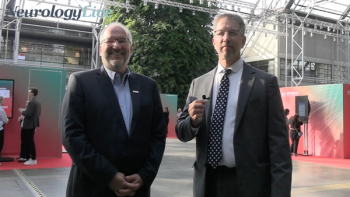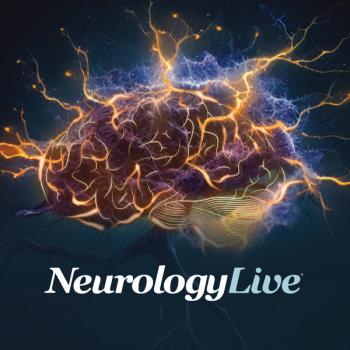
Melissa Spencer, PhD, gave commentary on her presentation from AANEM 2024, highlighting the emerging role of adeno-associated virus as a delivery system for gene therapies targeting muscular dystrophies.

Marco Meglio, Assistant Managing Editor for NeurologyLive, has been with the team since October 2019. Follow him on Twitter @marcomeglio1 or email him at [email protected]

Melissa Spencer, PhD, gave commentary on her presentation from AANEM 2024, highlighting the emerging role of adeno-associated virus as a delivery system for gene therapies targeting muscular dystrophies.

CAP-003, a non-invasive gene therapy, exceeded the 30% efficacy threshold for normalizing GCase activity in patients across all doses observed.

Over months 4 through 6, 69.1% of participants on erenumab 140 mg, and 60.3% of the erenumab 70 mg group achieved MOH remission compared with 52.6% of those on placebo

Test your neurology knowledge with NeurologyLive®'s weekly quiz series, featuring questions on a variety of clinical and historical neurology topics. This week's topic is on medication overuse headaches.

In a small sample population of adolescents with myasthenia gravis, nipocalimab met its primary end point, showing a significant reduction in total serum immunoglobuin over a 24-week period.

The chief medical officer at Immunic provided clinical insight on the dual mechanism of action of vidofludimus calcium, and how its positioned as a treatment option across all MS subtypes. [WATCH TIME: 3 minutes]

David Devos, MD, PhD, a neuropharmacologist at the University of Lille, in France, discussed positive data from an early-stage study assessing InBrain Pharma’s device-assisted therapy in Parkinson disease.

Fumihiko Urano, MD, PhD, principal investigator of the phase 2 HELIOS trial, discussed some of the notable findings from the study, as well as the potential of AMX0035 to treat patients with Wolfram syndrome.

Based on the positive data, the company plans to begin a phase 3 trial assessing FLT203 in patients with Gaucher disease type 1 in the second half of 2025.

Mind Moments®, a podcast from NeurologyLive®, brings you an exclusive interview with Anne Marie Morse, DO, FAASM. [LISTEN TIME: 12 minutes]

ArthemiR, a placebo-controlled study, primarily evaluates the safety of ATX-01 in myotonic dystrophy type 1, with other assessments that include target engagement and measures associated with muscle function.

The senior scientist at Sunnybrook Research Institute in Toronto, Ontario, provided clinical insight on his lecture given at AANEM 2024, focusing on the challenges and opportunities of teaching the next generation of practitioners.

An IDMC review of unblinded interim data was positive and advised that the trials continue as planned, with time to first relapse up to 72 weeks as the primary end point.

With the positive recommendation, it marks a key step toward eplontersen’s availability in Europe as a treatment for ATTR polyneuropathy.

Constantine Farmakidis, MD, an associate professor of neurology at the University of Kansas Medical Center, provided clinical commentary on a subanalysis of a phase 3 study assessing nipocalimab, an investigational agent, in generalized myasthenia gravis.

Study investigator Henry Kaminski, MD, provided clinical insight on a unique trial assessing the efficacy and safety of oral cladribine tablets, an FDA-approved medication for multiple sclerosis, in patients with myasthenia gravis.

The data shows that changes in neuropathy impairment scores using nerve conduction studies may forecast which patients will respond better to treatment.

Test your neurology knowledge with NeurologyLive®'s weekly quiz series, featuring questions on a variety of clinical and historical neurology topics. This week's topic is on Lennox-Gastaut syndrome.

Tuan Vu, MD, a professor of neurology at the University of South Florida, provided brief commentary on topline data of the phase 3 VIVACITY-MG3 study presented at AANEM 2024.

The phase 3 study is expected to include 110 patients with seronegative myasthenia gravis who will be randomly assigned to IV efgartigimod or placebo for a 5-week follow-up, followed by an open-label extension.

Despite balanced baseline characteristics, patients ranged from low to high number of rozanolixizumab treatment cycles, suggesting the need for a personalized approach.

Mind Moments®, a podcast from NeurologyLive®, brings you an exclusive interview with Daniel Claassen, MD, MS. [LISTEN TIME: 14 minutes]

The PREVAIL trial, presented at the 2024 AANEM meeting, is investigating gefurulimab, a bispecific nanoantibody designed to inhibit complement activation, as a potential treatment for patients with generalized myasthenia gravis.

Pozelimab and cemdisiran work together to block the complement pathway, which plays a key role in gMG, using two different approaches—one suppresses liver production of a key protein, while the other targets it directly with antibodies.

Zilucoplan, approved for generalized myasthenia gravis in 2023, showed consistent complement inhibition, even with additional treatments like IVIg or plasma exchange.

Long-term use of ravulizumab in patients with generalized myasthenia gravis led to a significant reduction in corticosteroid dependence, highlighting its potential steroid-sparing benefits.

Jonas Hannestad, MD, PhD, chief medical officer at Gain Therapeutics, provided clinical perspective on promising data from a phase 1 first-in-human study of GT-02287, an investigational therapy for Parkinson disease with or without a GBA1 mutation.

Over an 18-month period, patients showed strengthened scores on Rasch-built Overall Disability Scale, a patient-reported outcome measure of activity and social participation.


In this segment, the panel discussed adult-onset 5q spinal muscular atrophy (SMA), highlighting its frequent underdiagnosis and subtle symptoms such as cramps, fasciculations, and sports intolerance.